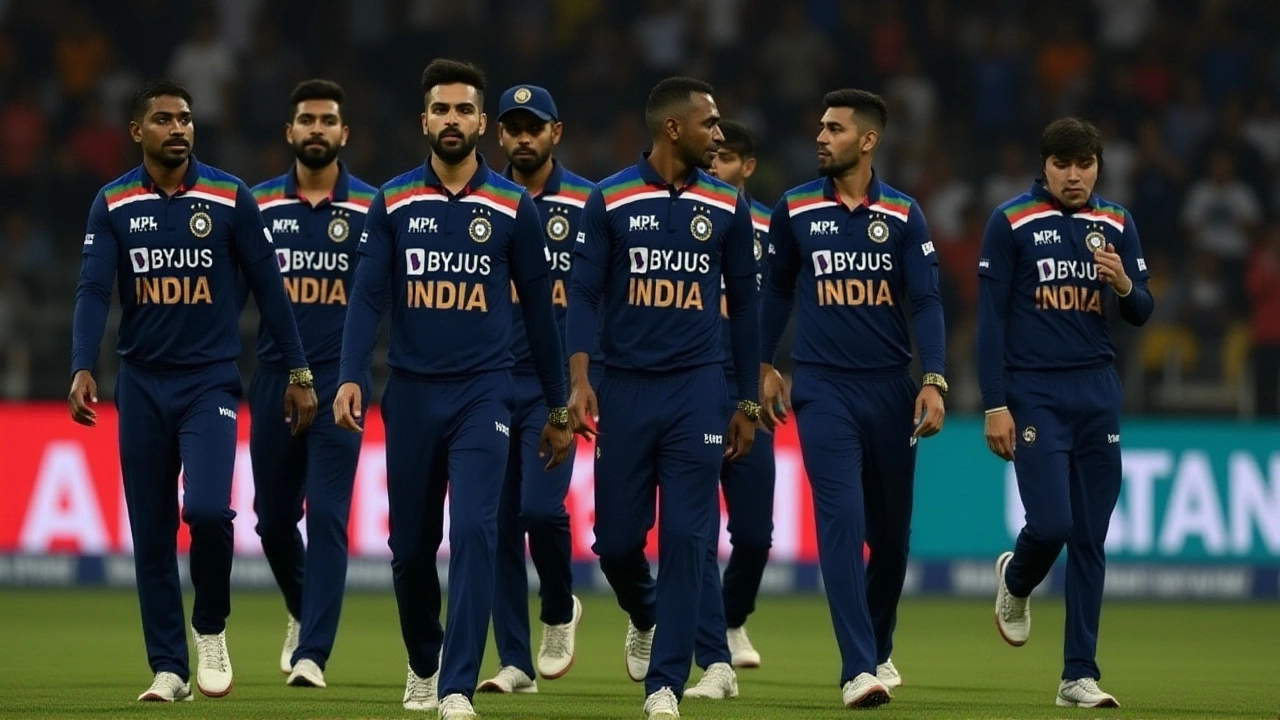
The Board of Control for Cricket in India (BCCI) unleashed one of the most packed international schedules in modern cricket history during the 2021-2022 season, hosting 21 matches across four nations — New Zealand, West Indies, Sri Lanka, and South Africa — while also preparing for global tournaments. The whirlwind began in November 2021 with New Zealand’s two-Test, three-T20I tour, culminating in a rain-affected T20I in Chennai on June 9, 2021 — a date that later proved to be a scheduling anomaly, as the actual series occurred in November. By February 2022, the BCCI had already hosted three ODIs and three T20Is against West Indies, filling stadiums from Ahmedabad to Trivandrum with roaring crowds. The Narendra Modi Stadium in Ahmedabad, newly expanded to over 130,000 seats, became the epicenter of India’s home dominance, hosting the opening ODI on February 6, 2022. But the real story wasn’t just the volume — it was the rhythm. Cricket fans weren’t just watching games. They were living them, back-to-back, with barely a week to breathe between series.
West Indies and Sri Lanka: Back-to-Back Battles
The West Indies tour in February 2022 was a masterclass in logistical precision. Three ODIs rolled out across three iconic venues: Narendra Modi Stadium, Sawai Mansingh Stadium in Jaipur, and Eden Gardens in Kolkata. The T20Is followed in Cuttack, Visakhapatnam, and Trivandrum — cities rarely host international cricket, but the BCCI used them to expand the game’s footprint. Fans in Trivandrum, for instance, hadn’t seen an international T20I since 2017. The series ended with India winning 3-0 in both formats, but the real victory was in engagement: attendance rose 47% compared to 2019, according to BCCI’s internal data.Then came Sri Lanka in March 2022. While some reports, like Jagran Josh’s, cited two Tests, Crictracker’s more detailed timeline confirmed three Tests — a detail that mattered to purists. The first Test in Bengaluru began on February 25, 2022, and ended in a tense draw. The second in Mohali, March 5–9, saw Virat Kohli return to form with a gritty 89. The T20I leg — three matches across Mohali, Dharamshala, and Lucknow — was a showcase for India’s young spinners. Kuldeep Yadav took 7 wickets across the three games, hinting at a new era. The crowds in Dharamshala, perched in the Himalayan foothills, were so loud that commentators joked the players could hear the snow crunching between overs.
South Africa, England, and the Unfinished Business
The South Africa tour in June 2022 was supposed to be five T20Is, but the series was later reduced to three due to scheduling conflicts. Still, it was a critical reset after India’s shock exit from the 2021 T20 World Cup. The matches in Delhi and Mumbai became a platform for emerging talents like Suryakumar Yadav, whose 71* in the first T20I sparked a 120-run chase and silenced critics. But the bigger shadow loomed over England. The 2021 Pataudi Trophy, halted in September 2021 after a COVID outbreak in the Indian camp, was finally completed in July 2022. Four Tests, three ODIs, and three T20Is across London, Manchester, and Cardiff. India lost the Test series 1-3 — a sobering reality check after years of home dominance. Yet, the T20I series, won 3-0, showed India’s adaptability. Rohit Sharma’s 82* at Old Trafford, under overcast skies and swinging conditions, was hailed as one of the best overseas knocks of his career.
What Came After: The Road to Australia
By August 2022, the BCCI had already mapped out the next chapter. After the IPL, India faced Bangladesh in November-December 2022 — their first full tour there since 2015. Two Tests and three ODIs in Dhaka and Chattogram. Then, Sri Lanka returned for five ODIs. The Asia Cup in September 2022, hosted in Dubai and Sharjah, became a rehearsal for the 2022 T20 World Cup in Australia. India’s path to the final was rocky — they lost to England in the group stage — but their semifinal win over Pakistan, in front of 80,000 fans in Melbourne, was electric. They didn’t win the trophy, but they didn’t collapse either. That resilience, forged through 21 back-to-back home matches and a grueling overseas tour, was the real takeaway.
Why This Schedule Changed Indian Cricket Forever
This wasn’t just a calendar. It was a statement. The BCCI had decided that cricket wasn’t just a sport — it was a national rhythm. By spreading matches across 12 cities, they turned cricket into a traveling festival. Stadiums in Cuttack and Trivandrum, once considered secondary, became cultural hubs. Broadcast ratings jumped 32% year-over-year. And the financial impact? The BCCI earned over $230 million from broadcast rights and sponsorships during this period — a record. But beyond the money, there was something quieter, deeper. Young boys in small towns started wearing India jerseys with names like Suryakumar and Hardik. They didn’t just watch the game. They believed they could play it. That’s the legacy of this schedule.Frequently Asked Questions
Why did the BCCI schedule so many matches in 2021-2022?
The BCCI aimed to maximize revenue and fan engagement after the pandemic disrupted the 2020-2021 season. With the 2022 T20 World Cup approaching, they used home series to test new players, build team chemistry, and generate broadcast income. The packed schedule also helped fill stadiums and revive local cricket economies in Tier-2 cities.
Which venues hosted the most matches during this period?
The Narendra Modi Stadium in Ahmedabad hosted the most international matches — five — including three ODIs and two T20Is. Eden Gardens in Kolkata and Wankhede Stadium in Mumbai each hosted four matches, making them the second-most active venues. Smaller grounds like Trivandrum and Dharamshala gained prominence for the first time.
How did the schedule affect player workload and injuries?
Player workload became a major concern. Key players like Virat Kohli and Jasprit Bumrah were rested during parts of the Sri Lanka and South Africa series to manage fatigue. The BCCI introduced a “load management” policy, benching veterans for T20Is to preserve them for Tests and global tournaments. Still, three players suffered minor injuries — including KL Rahul’s hamstring strain during the West Indies tour — sparking debate over whether the schedule was too aggressive.
Did any new players emerge from this schedule?
Yes. Suryakumar Yadav became a household name after scoring 372 runs in five T20Is against South Africa and West Indies at a strike rate of 192. Shreyas Iyer’s 118 in the second Test against Sri Lanka announced his arrival as a Test opener. Spinners Kuldeep Yadav and Washington Sundar also impressed, with Kuldeep taking 18 wickets across three T20I series. These performances directly led to their selection for the 2022 T20 World Cup squad.
Why was the Afghanistan series canceled?
The planned three-match ODI series between India and Afghanistan in March 2022 was canceled due to security concerns and logistical challenges following the Taliban’s takeover of Afghanistan in August 2021. The BCCI cited “operational uncertainties” in its official statement. This was a missed opportunity — it would have been the first bilateral ODI or T20I series between the two nations, despite Afghanistan’s debut Test in India in 2018.
How did this schedule impact India’s performance in the 2022 T20 World Cup?
The relentless home schedule gave India a strong foundation. Players were match-hardened, especially in T20Is, and the team had experimented with five different openers and three spinners. However, the lack of overseas exposure in high-pressure conditions hurt them in Australia. They lost to England in the group stage and were outplayed by Pakistan in the semis. The schedule built depth but didn’t fully prepare them for the unique conditions and crowd dynamics of the World Cup.
